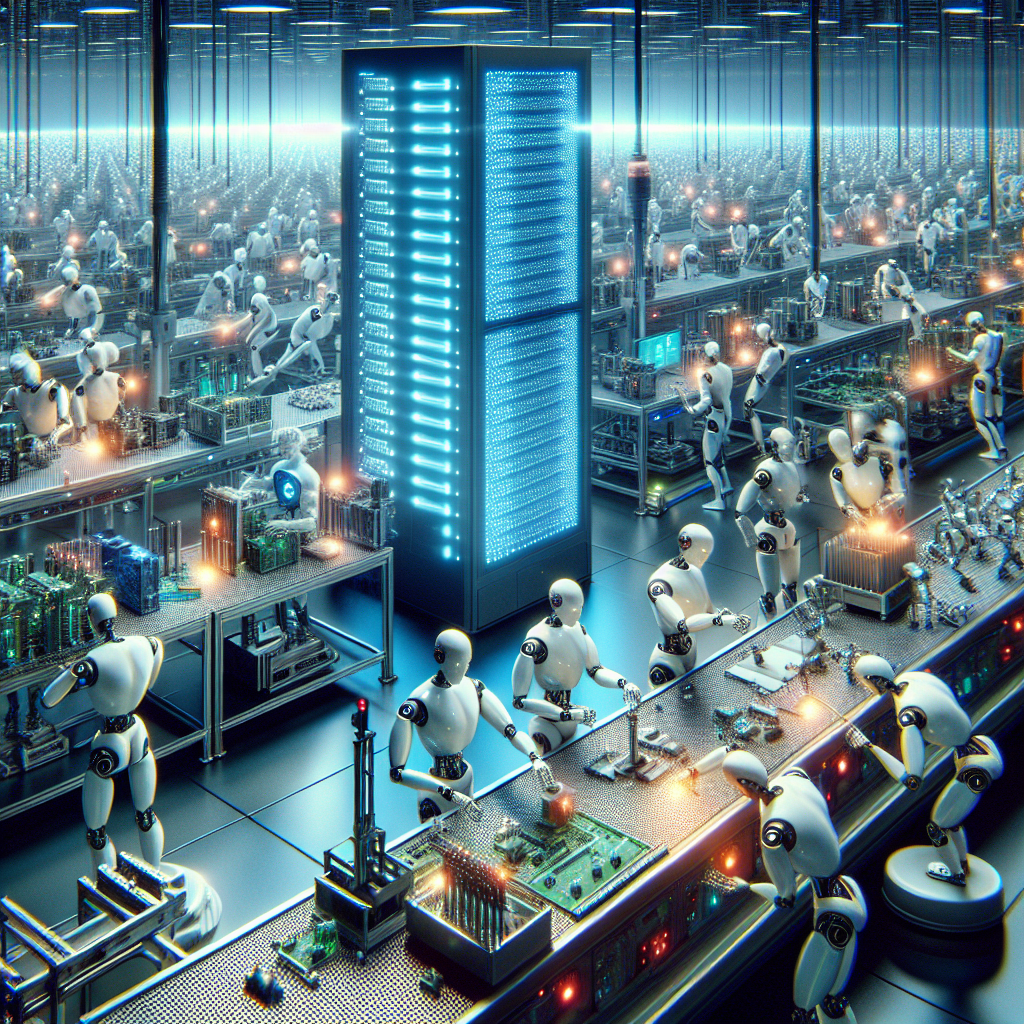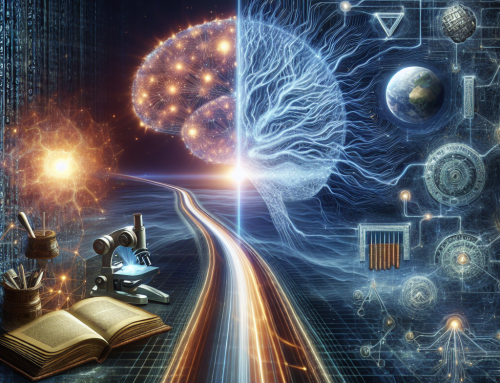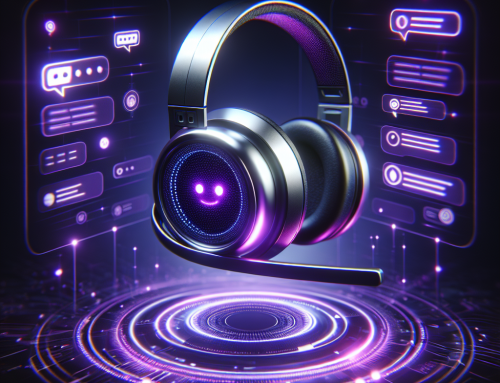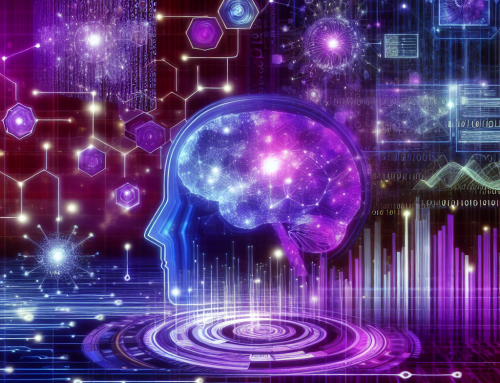
Introduction to AI Automation
In recent years, artificial intelligence (AI) has emerged as a transformative force, enabling businesses and individuals to optimize workflows, reduce costs, and improve decision-making. AI automation, specifically, refers to the use of AI technologies to perform repetitive or complex tasks with little to no human intervention. From automating customer service chatbots to optimizing supply chain processes, AI automation offers versatile solutions across industries.
Key Features of AI Automation
- Task Automation: Handles mundane and repetitive tasks, allowing employees to focus on creative and strategic work.
- Data Analysis: Processes vast amounts of data quickly to extract insights and drive decisions.
- Predictive Capabilities: Anticipates outcomes and proactively adjusts workflows to improve results.
- Adaptability: Learns from data to enhance performance over time.
Applications of AI Automation
- Customer Service: Virtual assistants and chatbots provide 24/7 support.
- Healthcare: AI-powered systems assist in diagnosing diseases and managing patient records.
- Manufacturing: Robotics and AI automate assembly lines, improving efficiency.
- Finance: Fraud detection systems and automated trading platforms rely on AI automation.
The growing reliance on AI automation reflects a larger trend of technology complementing human effort, creating opportunities for innovation and efficiency.
Overview of Multi-Agent Systems
Multi-agent systems (MAS) are networks of intelligent agents that work together to solve problems or achieve common objectives. These systems are inspired by collective intelligence observed in nature, such as the coordinated behavior of ants, bees, or flocks of birds. By emulating such distributed intelligence, MAS provides an innovative approach to tackling complex challenges.
What Are Intelligent Agents?
An intelligent agent is a software or robotic entity capable of perceiving its environment, making decisions, and taking actions to achieve a goal. Key characteristics include:
- Autonomy: Operates independently.
- Social Ability: Interacts with other agents or systems.
- Reactivity: Responds to changes in its environment.
- Proactivity: Takes initiative to meet objectives.
Key Features of Multi-Agent Systems
- Decentralization: Tasks are distributed among agents, reducing dependency on a central system.
- Scalability: Easily accommodates additional agents to manage growing demands.
- Flexibility: Adapts to dynamic environments.
- Resilience: Continues to function effectively even if some agents fail.
Applications of MAS
- Robotics: Teams of robots collaborate in manufacturing or exploration tasks.
- Traffic Management: MAS optimizes traffic flow in smart cities.
- Supply Chains: Coordinates logistics to improve efficiency.
- Telecommunications: Enhances network management and bandwidth allocation.
The strength of MAS lies in its ability to mimic collective intelligence, leading to more effective decision-making and problem-solving.
Benefits of Collaboration in Workflows
The integration of AI automation with MAS has the potential to revolutionize workflows. By combining the strengths of both technologies, organizations can unlock unprecedented levels of efficiency and innovation.
1. Enhanced Efficiency
Collaboration between intelligent agents ensures tasks are completed faster and more accurately. For example:
- Manufacturing: AI-powered robots work together to assemble products, reducing downtime and errors.
- Logistics: Autonomous vehicles and MAS coordinate to optimize delivery routes in real-time.
2. Improved Problem-Solving
MAS excels in handling complex problems by distributing them among agents. In AI automation, this means:
- Breaking down tasks into manageable components.
- Assigning them to specialized agents for faster resolution.
3. Greater Adaptability
Dynamic environments require systems that can respond to unexpected changes. MAS and AI automation enable this by:
- Continuously analyzing data.
- Adjusting workflows to accommodate new conditions, such as supply chain disruptions or shifts in customer demand.
4. Reduced Human Error
Automating repetitive and high-stakes tasks minimizes the risk of human errors. MAS adds resilience by detecting and compensating for errors in real-time.
5. Cost Savings
Though initial investments in AI and MAS can be significant, the long-term benefits often outweigh the costs. Automated workflows save money by:
- Reducing labor costs.
- Improving resource utilization.
- Enhancing operational efficiency.
Use Case: Smart Warehousing
In a smart warehouse, AI-driven robots equipped with MAS coordinate to handle inventory management, packing, and shipping. This collaboration results in:
- Faster order fulfillment.
- Lower operational costs.
- Real-time tracking and error reduction.
Challenges and Solutions in AI and Multi-Agent Integration
While the benefits of integrating AI automation and MAS are evident, challenges must be addressed to ensure seamless functionality.
1. Interoperability
AI systems and agents often come from different vendors or frameworks, leading to compatibility issues.
Solution: Develop standardized communication protocols and data formats to enable interoperability.
2. Communication Gaps
Effective collaboration requires seamless communication, often hindered by network latency or insufficient frameworks.
Solution: Employ advanced frameworks like message-passing algorithms or blockchain for secure and efficient data exchange.
3. Coordination Complexity
As the number of agents increases, coordinating their actions becomes challenging.
Solution: Use machine learning techniques to optimize agent interactions and resolve conflicts dynamically.
4. Security Risks
Distributed systems are more susceptible to cyberattacks.
Solution: Implement robust cybersecurity measures such as encryption and anomaly detection to protect MAS and AI systems.
5. Ethical Concerns
The automation of workflows raises ethical questions about job displacement and transparency in decision-making.
Solution: Promote responsible AI practices by ensuring transparency and involving human oversight in critical decisions.
Future Trends in AI Automation and Multi-Agent Systems
The future of AI automation and MAS is filled with exciting possibilities. As these technologies evolve, they will continue to transform industries and redefine the way we work.
1. Increased Autonomy
Agents will become more independent, requiring less human intervention.
- Autonomous factories that operate 24/7.
- Self-healing networks that detect and resolve issues automatically.
2. Advanced Learning Capabilities
The integration of reinforcement learning and neural networks will allow agents to:
- Learn from past interactions.
- Make better decisions over time.
3. IoT Integration
MAS and AI will increasingly collaborate with IoT devices to create intelligent environments. For example:
- Smart cities where traffic lights, vehicles, and pedestrians interact harmoniously.
- Smart homes with interconnected appliances that adapt to user preferences.
4. Human-Agent Collaboration
Future systems will enhance human-agent collaboration, allowing humans to:
- Delegate complex tasks to agents with minimal supervision.
- Work alongside AI-powered systems to achieve better outcomes.
5. Ethical AI and Governance
As AI and MAS become more pervasive, there will be a stronger emphasis on:
- Establishing ethical guidelines for their use.
- Ensuring accountability and fairness in decision-making processes.
The integration of AI automation and multi-agent systems represents a paradigm shift in workflow management. By fostering collaboration, these technologies enhance efficiency, adaptability, and problem-solving capabilities.
While challenges like interoperability and ethical concerns remain, advancements in technology and governance are paving the way for smarter, more resilient workflows. By adopting these transformative technologies, organizations can redefine the future of work and stay competitive in a rapidly evolving landscape.
Contact us today to transform your workflows with AI automation and multi-agent systems!






